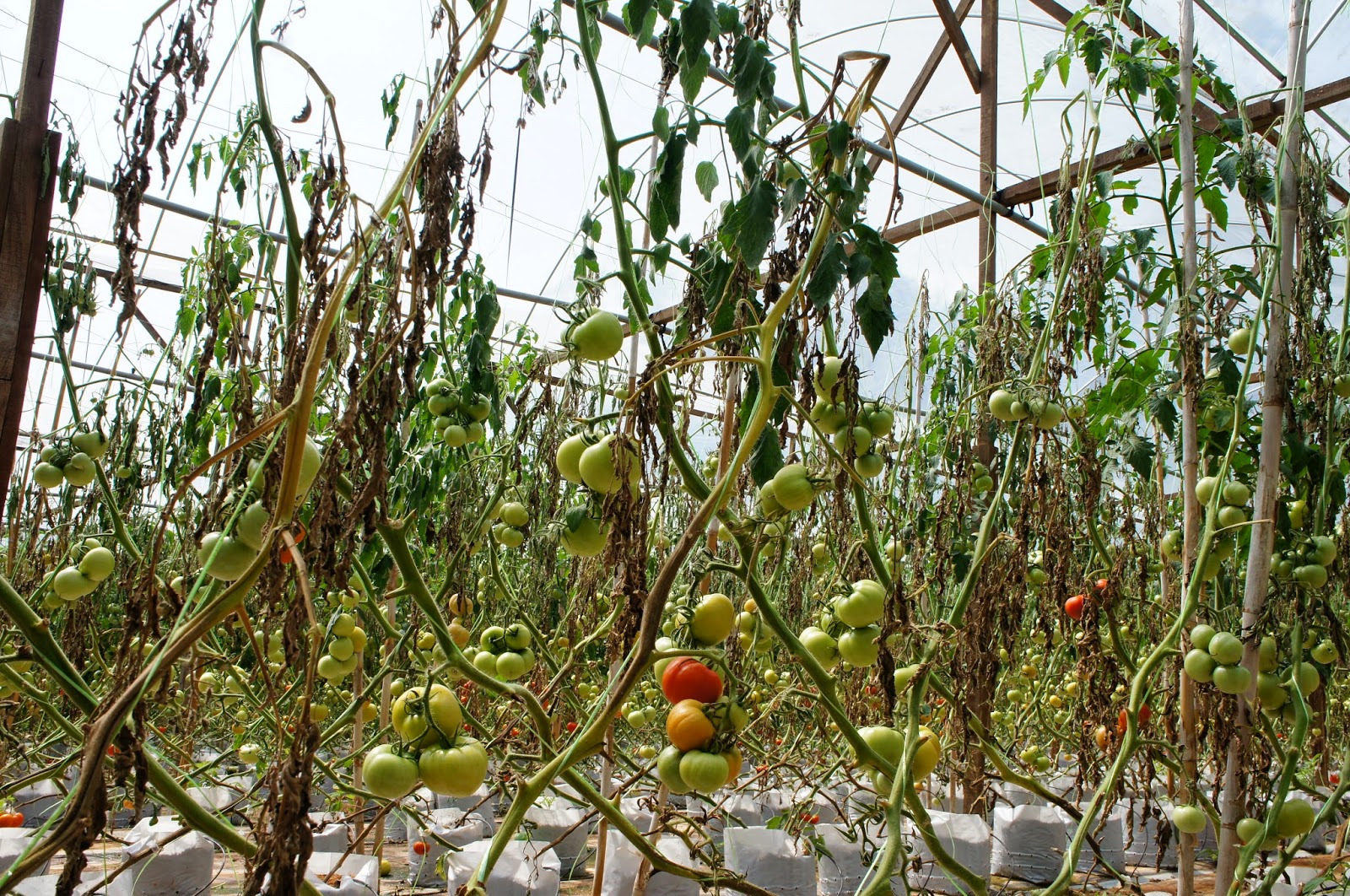Sooty mould (Cercospora abelmoschi) is the black mould grow on the honey or plant sap left by plant sucking insects like aphids and leafhoppers. It is not harmful to the plant, large colonization cause reducing photosynthesis process and weakening the plants, make it vulnerable to insects attack. Besides, it is good indicator of infestation of plant sucking insects that may carry the virus. Okra plants that infected by virus will be stunted and leaves became rosy.
 |
| Sooty mould almost colonized the whole leaf of okra |
Amrasca biguttula favour the okra and hopping on the leaves. It is easily recognized by its two dots on the back of wings. They stay underside of leaves and feed on plant saps at all stages of life cycle. Complete life cycles of A.biguttula is 1 month, eggs hatch in 1 week and nymphs comprises 5 instars, which emerge as adult in 1 week time. Adult has 2.5 weeks of lifespan. Lessenta (fipronil + imidacloprid) from Bayer at 3g/ 16L pump could reduce the population to certain level, but not during the pest outbreak. Besides, Plenum 50WG (pymetrozine) at 5g/ 16L pump from Syngenta has good control on leafhopper as well. Neonicotinoids such as imidacloprid (Confidor) and dinotefuran (Oshin 20WP) as well as Clothianidin (Dantotsu) at 5-10 g/ml definitely could bring the population below threshold level too.
















